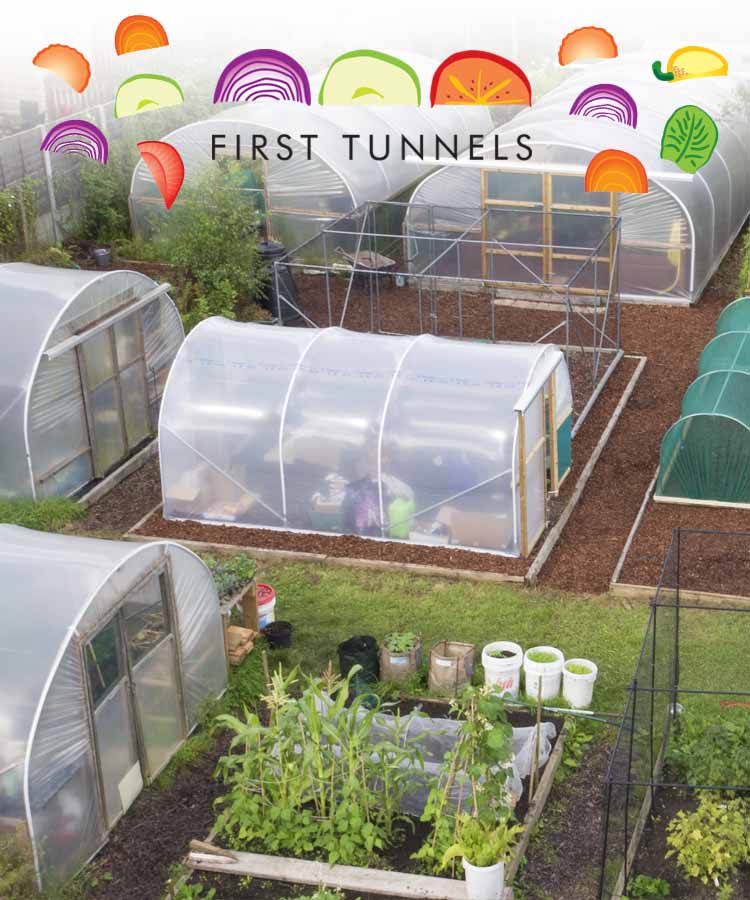A Polytunnel extends the growing season and provides the perfect environment for frost-tender or exotic plants to continue to thrive during the winter. How much heat is required throughout the chillier months depends on how cold the winter temperatures are and how warm the Polytunnel needs to be. We know using a polytunnel heater to warm a Polytunnel or Greenhouse can be a costly luxury and nobody likes the idea of wasting energy or money. However, if you are feeling the chill, then it's time to turn up the heat and keep young, tender plants snug and warm until spring arrives.
Here are some top tips to help keep costs down and make heating your Polytunnel more efficient this winter, including some polytunnel heater alternatives to keep your young plants warm all winter long.
Bubble Wrap Insulation - A layer of bubble wrap fastened with string inside your Polytunnel will help to block icy draughts and reduce heat loss. Simply tie string between the hoops and carefully - although a little bit fiddly, feed the bubble wrap between the polythene cover and the string. When buying bubble wrap, look for the purpose made horticultural bubble wrap insulation as it is toughened and UV stabilised. *TIP* Larger bubbles will let more light in. You can also use bubble wrap insulation to protect outdoor pots preventing your favourite pots from cracking in freezing weather.
Only Heat The Area That You Need To - Heating a large Polytunnel or Greenhouse can be wasteful and expensive especially if you only have a few delicate plants you wish to nurture throughout the winter months. Try to group them together in one section, create a bubble wrap insulation curtain to divide the Polytunnel into smaller areas which can be heated more economically. Using a Mini Polytunnel inside a Polytunnel like "double glazing" along with a few candles will help raise the temperature.
Stone Method - Gather medium to large stones (Free stones can be found on classified websites) and make a pile with the stones throughout the Polytunnel - It is suggested 36kg of stones to generate heat for each square foot. The stones will absorb and retain heat from the sun and slowly release it through the night the night, therefore keeping the inside of the Polytunnel a degree or two warmer.
Use Horticultural Fleece - On extra cold nights. Frost protection for plants will provide protection from cold winds and frosts, you will also find it helps to warms up the soil too. Temperature protection can be increased by simply adding multiple layers of fleece and is often used for covering cloche hoops, mini polytunnels, cold frames and lining greenhouses. Remember to remove the fleece during the day to ensure the plants receive adequate ventilation and light.
Create A Heat Sink - Place a dust bin, barrel, bucket or anything else black for maximum solar gain in the corners (or other practical places) inside your Polytunnel and fill them with water. The water will absorb energy during daylight hours, hold onto the heat and keep your Polytunnel a few degrees warmer in the winter - A difference that might be critical! Put the plants that require the most heat closest to the barrels. Monitor the temperature of the Polytunnel with a thermometer that measures the coldest daily temperature as well as the current temperature. Add additional barrels if the temperature is too cold. Lower the amount of water in the barrels or remove barrels if the temperature is too high.
A Rabbit Hutch - If you have a pet rabbit, place the hut inside the Polytunnel. The heat it radiates will take the chill of the air and your bunny might just like it too.
Fortunately, there are several ways to heat up a polytunnel during winter. To provide the best environment for your tender plants, you should aim to maintain a temperature of around 26 - 30 degrees celsius. So, try some of our polytunnel heater tips to keep your polytunnel at the optimum temperature all winter long.
